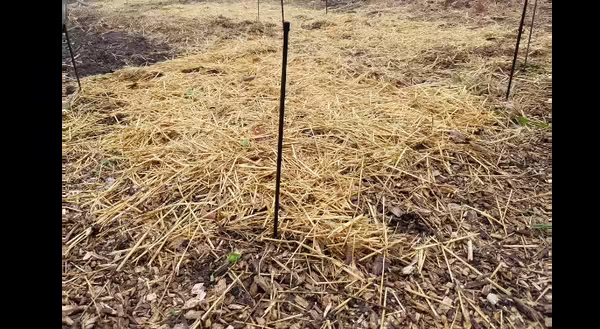
Vegetable gardening takes some forethought and planning to ensure your garden space is ready, select the best crops, and get everything planted while working around spring rains. Our enthusiasm and planning in early spring typically culminates in the planted garden and often wanes as the work and heat of the growing season sets in.
I am as guilty as the next gardener for not thinking enough about garden maintenance later in the year during the excitement of spring planting. However, there are some things we can think about now to setup of the rest of the season for success.
One of the key factors in weed control is never letting weeds go to seed. Nonetheless, weed seeds are present in the soil either from past generations of weeds or from deposition by wind or animals. It’s just a reality of vegetable gardening and it really helps to think about the fact that soil tillage or disturbance stimulates the weed seed bank.
One great strategy for eliminating a ton of weed seed is to immediately cover a tilled area with black plastic, cardboard or layers of newspaper, essentially anything that blocks the sunlight out entirely. Upon tillage, weeds will germinate but quickly die from lack of photosynthesis in the absence of sunlight. To be effective, it will probably take 3-4 weeks of blocking the sunlight. Once you remove the covering, be sure to minimize soil disturbance to limit stimulation of any remaining weeds. And the same goes for any tilled area, be sure to minimized disturbance after tillage.
An adaptation of this method is also a great way to kill turf grass prior to starting a new garden. Cover an area of turf with cardboard or layers of newspaper (no plastic), followed by a 2 to 4-inch layer of good garden soil or compost. After 4 to 6 weeks of cover, the turfgrass will be dead from lack of sunlight and you can plant directly through the soil/compost with seedlings by carefully digging a hole for each.
I am a huge fan of mulch as a way to suppress weeds. It’s also a great way to reduce tillage if you mulch heavily at the end of the growing season. The mulched area is perfect for carefully planting seedlings with minimal disturbance. Simply pull back the mulch, dig a hole to plant your seedling, and replace the mulch afterward.
The benefits of mulch go well beyond weed control since it also functions as moisture-saving barrier at the soil surface. My favorite garden mulches are straw, leaves, and woodchips. I use all three in combination each year depending on the crop I am mulching.
Smaller, more delicate plants, like lettuce and spinach, do much better with a straw mulch, although you cannot always mulch thick enough to eliminate all sunlight. However, the straw does block a good amount of sunlight and, more importantly, retains valuable soil moisture. Woodchips or leaves work better in areas where you plan to add seedlings of larger plants like tomatoes and peppers since you can add a much thicker layer of woodchips around the larger plants for even more sun-blocking, moisture-saving protection.
As the gardening season heats up, it becomes much more important to effectively manage soil moisture. While mulch is a great first step, it pays to know exactly when to water the garden. Ideally, a vegetable garden needs about one inch of rainfall a week. When natural rain events fall short, it’s time to irrigate.
To help estimate how much you need to irrigate, think about the typical family-sized garden of about 200 square feet. It would require about 120 gallons of water across this surface area to apply 1 inch of water. For a rough measurement of how long it takes to apply 1 inch of rainfall, fill a container of known volume with your watering hose and time it. You can then estimate how long it would take your hose to apply 120 gallons or inches of water.
Over the past few weeks, I have covered the basics of starting a vegetable garden. If you happened to miss those articles, please take a look at my blog archive. If you have additional questions on vegetable production, I highly recommend the Illinois Extension publication titled “Vegetable Growing in the Midwest” which is available for purchase at go.illinoi.edu/vegetablegardening.